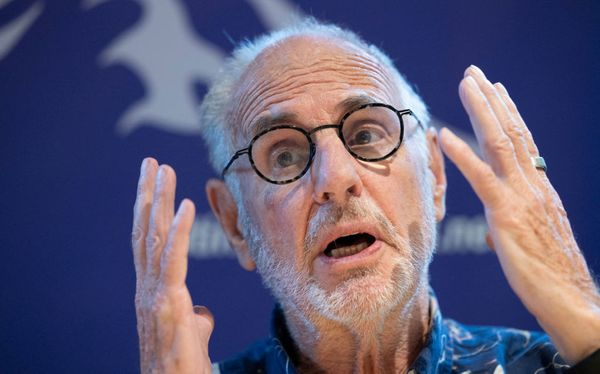
Trending
Welcome to 2022! And what better way to start the year than to look at what a pack of deranged online adults accusing a young teenage journalist of being a government plant can tell us about how Australia treats online abuse.
Leonardo Puglisi is an entrepreneurial 14-year-old from Melbourne who’s spent the last few years setting up his own independent and remarkably professional digital media publication 6 News Australia. His work interviewing real politicians and debunking viral misinformation is impressive even before you consider that he’s at the age that most of us spent playing Counter-Strike or punching bongs.

Puglisi’s journalism has earned him the ire of internet poisoned partisans who’ve posited at various points that he’s a Liberal government stooge, a Labor shill, or that he’s not even a teenager despite his boyish visage.
If all this sounds silly, that’s because it is. What’s less silly is how people believing these insane rumours have responded. Grown-ups have swarmed Puglisi online, sending torrents of critical, abusive messages his way. The sheer scale and virality of the abuse is quite confronting.
Worse yet, Puglisi told me that people have threatened to turn up at his school, his mother’s work and even tried to track down where he lives. All for the audacity of fact-checking online bullshit. He says he’s fine and is coping by using Twitter’s platform tools to block abuse.

Since the government has been electioneeri– err, I mean, “promoting” how it has regulated Big Tech and passed reforms to keep children safe online, I wondered how could it help in this example?
Certainly some of the abuse that Puglisi has faced is defamatory. But the government’s new “anti-trolling” bill — which the Attorney-General’s Department recently admitted is really about dealing with defamation — is useless in this situation because pursuing legal action would be prohibitively expensive and, given the nature of abuse, like trying to put out a house fire with a squirt gun.
The Office of the eSafety Commissioner would be the next place to look. Even if Puglisi wasn’t a child, the recently reappointed commissioner Julie Inman Grant received additional powers to deal with online cyber abuse when the Online Safety Act came into effect. This could help as Grant could compel platforms to pull down “menacing, harassing or offensive” content if they fail to do so themselves. Puglisi tells me that he’s considering speaking to her office.
But much of the abuse — the large number of messages from different people haranguing Puglisi — would likely fall below that threshold even though they are psychologically draining. And no law about online conduct can stop one of the incensed idiots from deciding to turn up in real life, God forbid.
Which all goes to prove how difficult it is to deal with abuse related to social media because it no longer just neatly fits into “online” and “offline” categories. A large part of the risk is inherent to online platforms, set up to encourage conflict and filter bubbles, and how they allow groups to gang up on an individual.
The resources Australians have to respond to online abuse are built around individual reports and responses — something that doesn’t help that much when abuse comes from a crowd rather than an individual.
Hyperlinks
Kids on the frontline: celebrities and international anti-vaxxers fuel local juvenile jab pushback
A few weeks ago, I put out a three-part series looking at how anti-vaccine campaigners had moved on to a new target: children’s vaccination. (Crikey)
Protesters condemned by First Nations elders as police confront Parliament House rally
Nine’s Jack Latimore and Rachael Dexter have been covering the bizarre saga of dueling Aboriginal Tent Embassies: one legitimate, the other a vehicle for conspiracy fuelled sovereign citizen types who’ve gone from organising online to congregating in real life. (Nine)
DTA’s digital age verification tool being considered for online pornography, documents show
The government is considering how they can use a future digital age verification tool for different purposes such as online pornography. Any tool would likely need you to prove who you specifically are in order to prove your age — so get ready to hand over your drivers licence to access Brazzers. (Canberra Times)
How parasocial relationships affected me and my favourite Instagram dominatrix
Do you think you’d get along with your favourite influencer if you met them IRL? Would you reference an in-joke to the podcaster who you’ve listened to for hundreds of hours? This piece explains why this type of relationship is a) common and b) encouraged by the platforms we use. (Pedestrian)
I made my own cryptocurrency called Cammycoin. (Please don’t buy it)
I have an investment opportunity that you really can’t afford to miss out on. (Crikey)
Content Corner
One clear sign that we’re rapidly approaching an election is the number of Australian politicians who’ve decided to dip their toes into TikTok, including the prime minister who joined late last year.

Getting on the short video platform makes sense. TikTok is well and truly one of the most popular ways for Australians to spend time online and, increasingly, the engine of a lot of online culture.
TikTok has a lot of political content but it’s not the natural home for politicians. My guess is that’s because doing an engaging video requires a different set of skills than a photo op posted to Facebook or an evasive TV interview. The platform has even banned political advertising altogether. Still, some have not been able to resist the allure of the super engaged young-skewing audience on the platform.
So far, I’ve counted 42 federal politicians, state premiers or major political parties who have joined to varying levels of success. I’ve also noticed a surge in politicians signing up and the number of videos they’re making — all indicators of a growing focus on the platform.

What’s fascinating is the different ways that parties are using the platform. Labor seems to have the upper hand so far in terms of both the number of accounts and how well they’re doing. The best performers out of all political accounts I’m tracking are Labor MP Julian Hill (by far), the Australian Labor Party and Annastacia Palaszczuk. Their success seems to be because they abide by TikTok’s norms: short, sharp videos that use the platform’s features like trending sounds, text or effects.
Meanwhile the government lags behind. Other than the prime minister, accounts belonging to MPs like Jason Falinski, Andrew Bragg and Dave Sharma haven’t quite caught on yet. Their videos stylistically seem like they’d be more at home on Facebook: they’re longer and feel more rehearsed and less intimate. As far as I can tell, none of the Nationals have a presence. Outside of the two major parties, other standouts include the accounts of Bob Katter and Jacqui Lambie.
All-in-all, there seems to be a correlation between politicians who are able to generate headlines in the traditional media and those who have an eye for creating captivating TikTok content. No doubt these skills will come in handy when vying for the votes of the millions of Australians who scroll through their For You Page each day.







